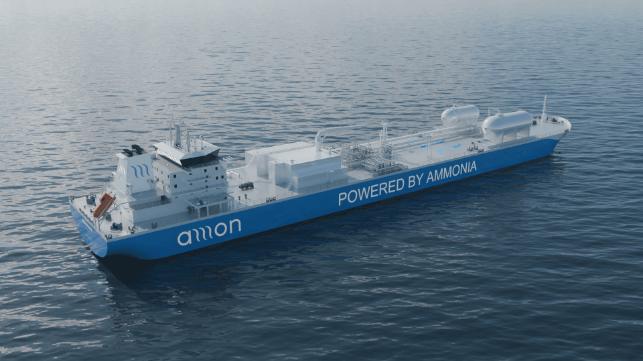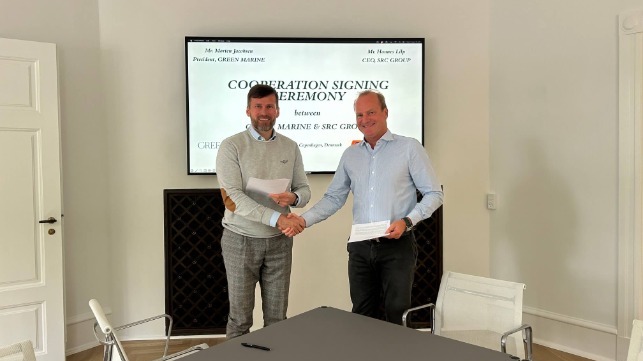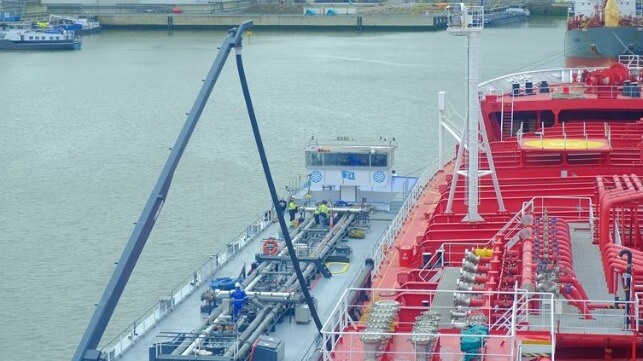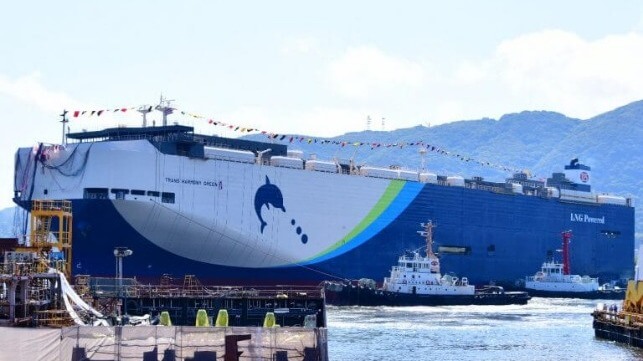Water, Climate, Violence

Image by Jani Brumat.
“For Fanon, then, the right to indifference, or to ignorance, does not exist.” The doctor’s task “was to rise up in revolt, become indignant, show alarm… not to dissimulate the real”. Mbembe Necropolitics
Weather whiplashing, unprecedented heat waves, drought, and forest fires, are in the news. Storytelling may begin in the middle of an action such as in John Milton’s poem Paradise Lost( in media res,) or as in usual reporting about climate change. In this article I will focus on what is often left out and try to resuscitate some of the beginnings of the story about water and climate change, especially the siloed, intermeshed systems that Nigerian scholar Achille Mbembe calls “necropolitics.” [1] This picture contrasts with what seems to me pastel environmentalism and its focus on preserving beautiful natural spaces, transitioning through consumer choices like EV’s and ecotourism, the individual experience of ecoanxiety in a world where so many people live and die in devastating wretchedness. Does pastel environmentalism convey the severity of climate impacts or the depth of criminality? Focusing on the whole picture includes the human world and the complicated climate system, not just the use of one number to explain climate: global average surface temperature, carbon budget, net zero.
But information is clearly not enough. The situation in Gaza with worldwide protests and ample news coverage have not led to real action by the UN, by international courts or governments. Israel’s murders continue unabated. Mbembe’s necropolitics.
But ignorance is unacceptable. Now lost are many sources of information and basic concepts like life-cycle analysis and externalities, amplifying feedbacks and carbon sinks. Lost is information from the Global Humanitarian Forum, the Earth Policy Institute, facts from the paleoclimate record, uncounted emissions because the Kyoto Protocol exempted international aviation, shipping, and the military.
Most disturbing is silence about human death. Humans are represented as numbers, elements, collateral. Human life is costed. Although there are compilations and hockey-stick shape graphs measuring changes from the beginnings of the industrial revolution in 1750 to the present, showing dramatic changes in atmospheric CO2 concentration, the incidence of climate floods, change in ocean ecosystems, loss of rain forest and woodland, biodiversity, damming of rivers, water use, there are no composite figures or graphs about human death. Many studies (and and )show that figures grossly underestimate climate change-related deaths. The Global Humanitarian Forum under Kofi Annan only functioned for two years and estimated that there were 300,000 deaths/year at the time of the Copenhagen 2007 Cop meeting. Current estimates and projections vary from 400,000 deaths/year to projected 5 million/year. How many hot-bulb temperature deaths are uncounted in current heatwaves?
Water, Climate, Violence
News about water and climate change leave out much: they focus on drought and depleted reservoirs worldwide, often with warnings about violence and social upheaval. But a substantial loss of fresh water comes from other climate impacts like melting glaciers and ice shelves, and loss of fresh water comes from the corporate/industrial complex. Is violence a situational local reaction of rioting due to an emergency, or is violence due to the military/security/corporate nexus?
Water, Climate, Industrial Capitalism
The Earth Policy Institute found that it was far more profitable for farmers to sell water to cities. It takes only 14 tons of water to make a ton of steel worth $560, but it takes 1000 tons of water to grow a ton of wheat worth $200.
Water used in industry is prioritized over water for agriculture, health, sanitation.
Water and computer chips: according to SourceAbility, chip plants go through millions of gallons of water every day to cool machinery and make sure wafer sheets are free of contaminants. A single manufacturing facility can run through millions of gallons of ultrapure water per day. The ultrapure water also needs to be filtered so well that contaminants as small as salt ions are removed. It takes eight to 10 gallons of water to make a single computer chip.
It takes 400,000 liters of water to make one car. [2]
In heavily industrialized China, Hu Siyi, vice minister at the Ministry of Water Resources stated in 2012 that up to 40 percent of China’s rivers were seriously polluted by industrial waste. About two-thirds of Chinese cities are “water needy” and nearly 300 million rural residents lack access to safe drinking water. It is estimated that 4.05 million hectares of land in China are irrigated with polluted water.
Capitalism and Dams
Rivers are dammed to supply electricity. Damming and diversion of water systems are linked to unsafe concentrations of mercury and water borne diseases. The number of large dams worldwide has climbed from just over 5000 in 1950 to 40,000 today. The number of waterways altered for navigation has grown from fewer than 9000 in 1900 to almost 500,000. The Nile, Ganges, Yellow River, Colorado, Rio Grande are dammed, diverted, or overtapped, so that little or no fresh water reaches its final destination.
In December 1991 Lawrence Summers World Bank [WB] Chief Economist, wrote a confidential memorandum on the World Development Report. He argued for exporting polluting industries to countries of the South, which are largely under-polluted, as a rational means of creating industrial development while alleviating the pressures of pollution in the North. In May 1992 a few days before the beginning of the Earth Summit, the WB received a report on the Narmada River dam in India, that it would displace 240,000 people, not 100,000. the report had to be kept secret until the Earth Summit was over. The WB was then entrusted with management of the Global Environment Facility (GEF), the global funds for the environment. The World Bank Report recommending a moratorium on dam building was shelved and dam-building proceeded full-steam ahead.[3]
Water, Climate, Extraction
Reiterating Fanon: the right to indifference or to ignorance, does not exist.
All consumers should know how the blood of the Congo powers our lives, how pastel environmentalism and techno fixes paper over death. “The thirst for money transforms men into assassins… All means are good to obtain money or humiliate the human being.” ( Eugene Kabanga Songasonga).
The case of Ira Rennert: “As an individual consumer, Rennert represents hyperconsumption at its worst. His way of living is a gross insult to the earth. But as the owner of the Renco Group Inc.(mining in U.S. and Peru), he has shortened the lives of tens of thousands of people and laid waste to entire ecosystems. As a consumer, Rennert lives an excessively wasteful life. As a capitalist, he has power over the way that other people live – and the way that they die.” [4]
Siddharth Kara travelled the Congo and listened to what people there endured. He witnessed atrocities and talked to the children and parents who worked in the cobalt mines. He reports the deceptive cynical euphemisms of lofty international human rights principles espoused by corporate profiteers and governments and cultures of all stripes. [5]
Tilwezembe, where the mine is “owned by Glencore via its 100% ownership of Canada-based Katanga Mining, which in turn owns a 75% stake in Tilwezembe (Gecamines owns the other 25%).” Major buyers include Congo Dong-Fang Mining, Kamoto Copper Company, COMMUS (Zijin Mining) and CHEMAF. There is no regulation or oversight for tens of thousand artisanal miners, where children are often enslaved in debt bondage. “They [The Republican Guard] monitor the villages, and they intimidate anyone who speaks…they will be shot in the night, and their body will be left on the street to instruct anyone else on the consequences of opening their mouths…. A 15 year old boy…struggled into the room with the assistance of crutches. Two mangled legs dangled from his narrow waist..his face was scrunched in an expression of distaste…words emerged from his mouth in short bursts and erratic puffs. He spoke of children ages 10 t0 13. They were not yet strong enough to dig tunnels so they dug at the surface in different areas each day. ‘Boss Chu paid us based on the purity of the ore. Some days, if the purity was not good, he did not pay us anything. I was digging inside a pit with my brother, Beko. There were three other groups digging in the same pit. I heard something like a rumble sound. When I looked up, the pit collapsed around us…’ ‘I was buried under the stones. I could not move. I tried to scream, but I could hardly breathe… Some people pulled me out. When I saw my legs, the bones were sticking out of my skin.’ His brother was killed. Everyone was killed when the wall collapsed. ‘I was the only one who survived.’ Up to 10,000 people toiled at Tilwezembe on any given day.”
Kolwezi. Another child, Augustin , was distraught after several days of trying to find the words in English that captured the grief. He would at times drop his head and sob before attempting to translate what was said. As we parted ways, Augustin had this to say, “Please tell the people in your country, a child in the Congo dies every day so that they can plug in their phones.” Mines occupy at least 80% of the developed land in Kolwezi. “The green is gone. Arable earth is extinct…the hunt for cobalt is all.”
Canadian historian Alain Deneault describes how extraction is the life-blood of capitalism and how monopolies, law, politics, academia partner with an industry “that has demonstrated its contempt for the common good on every continent”. Finance makes law oversight methods look like a sieve.[6] Canada, the EU countries, U.S. World Bank, and IMF participate in the mining projects. The Marlin Gold Mine depleted fresh drinking water, caused massive degradation of the Siria River Valley due to heavy metal pollution and acidic mine drainage, and poisoned people and cattle.
Water, Climate, Factory Farming
Between 2010 and 2019,it was estimated that forestry, agriculture, and land use contributed between 13% and 21% to global greenhouse gas emissions.[2] In 2020, it was estimated that the food system as a whole contributed 37% of total greenhouse gas emissions, and this figure may not include transportation emissions of food distribution because international aviation and shipping [and the military!] are exempt under the Kyoto Protocol. The dominance of factory farming in the total global agriculture economy is controlled by a small number of transnational corporations, funded and protected by nation states, the World Bank and the IMF.
Cry the beloved country: Lake Naivasha Kenya lies in the Great Rift Valley and is a “paradise of biodiversity, flush with giraffes, zebras, water buffalo, lions, wildebeests and at least 495 species of birds. Until 1904, when the government signed an agreement opening it up to European settlers…” Soon they bought up all the best land and converted the economy to flower farms. The population grew from 7000 to more than 300,000 to service the flower industry. The majority are black, female, living in slums with no running water and pit latrines that leach into the lake.” Roses are 90% water and Europe is using this and other African lakes to protect their own water sources from exploitation. “We’re among the top on the list of the World Food Programme for food donations, even though in Naivasha we have a freshwater lake that would allow us to grow food to feed ourselves. Yet we take this water to grow flowers and then ship them 5,000 miles to Europe so that people can say ‘I love you, darling’ and then throw them away three days later… more than 30 flower farms in the Lake Naivasha region pose number of serious ecological problems for Kenya’s rivers and for the lake, including loss of water, an unsustainable increase in the population because of the laborers they have attracted, and the overuse of pesticides and fertilizers.” [7]
What was UN Secretary General Guterres thinking of when he bestowed decision-making status to these captains of factory farming at the UN Sustainable Food Summit? Syngenta and Dupont control 44% of sales of seeds in world. Dow Chemical produces seeds resistant to 8 herbicides. A French company has oil palm plantations in Liberia, Cote d’Ivoire, Cameroon, Nigeria, Indonesia. The Alliance for a Green Revolution in Africa (AGRA), created and financed by the Bill and Melinda Gates Foundation, has contributed to the privatization and consolidation of corporate monopolies over seed development and seed markets. The Summit’s rules of engagement were determined by a small set of actors. The United Nation Food Systems Summit (UNFSS) and was held on 23 September 2021, at the UN General Assembly headquarters in New York. The summit was supposed to help solve the global food crisis, in which 800 million people face hunger and 1.9 billion suffer obesity. The summit was hijacked early on by corporate interests. It is officially sponsored by the World Economic Forum, the private foundation that brings the world’s global elite to Davos, Switzerland, every January. Many social movements and civil society organisations protested the summit for being undemocratic, non-transparent and laser-focused on strengthening only one food system: the AI-controlled farming systems, gene editing, and other high-tech solutions geared towards large-scale agriculture. Farmland is being scooped up in dozens of countries by foreign investment firms, including biofuel producers.[8]
Vigorously protesting are regional agro-ecological farmers, often peasants, whose practices are adapted to specific regions, cultures, and labour conditions. Bolsonaro designated one of the oldest organized movements, La Via Campesina, a terrorist organization.
Climate, Water, Violence
The innumerable predictions of mass chaos and violence is a rationale for militarization. UN Peacekeeping, Responsibility to Protect (R2P), and Least Detrimental Alternative are recent Orwellian iterations: in Haiti UN Peacekeepers still deny responsibility for bringing cholera to Haiti and causing at least 10,000 deaths; after the Haiti earthquake the US military supposedly protecting earthquake victims delayed delivery of emergency water supplies from reaching victims when it prioritized bottled water for its own use, and torture is now legally justified.
The use of water as a military tool for political ends is well-practiced against Palestinian villages in Israel, and especially in ‘Area C’ of the West Bank. The United Nations’ formal recognition of the Human Right to Water in 2010 coincided with a stepped-up violation of that right, just south of Hebron. Israeli army strategically destroys basic of water infrastructure, even prohibiting collecting rainwater in rooftop cisterns. Israel repeatedly destroys Gaza’s power system essential for water purification and sanitation.
There is a long record of militaries bringing violence while people on the ground organize themselves in disasters (e.g. Haiti earthquake, Hurricane Katrina).
Conclusion
There is a current UN initiative to formulate an international legal agreement on cooperative sharing and protection of cross-border aquifers, but observers of UN inaction on climate change and inaction about the Gaza genocide, or on banning nuclear weapons, must realistically see this UN effort as too little too late.
This brief survey only conveys part of the picture, the tip of the proverbial iceberg, a plea to open eyes and to see what’s in plain sight. Stop blaming human nature or the general public. See the inefficacy of institutions and rhetoric that have not prevented one murder in Gaza or one climate death, the extreme culpability of people in positions of power and influence, their impunity, indifference, entitlement to determine who lives and who dies. Picture the military converted to a civilian conservation corps and first responders corps, banks converted into housing the homeless, local food distribution. Muster the energy and cohesion to persistently and insistently require “Stop”
[1] Achille Mbembe Necropolitics Duke University Press, Durham 2019
[2]Maude Barlow and Tony Clarke Blue Gold: the fight to stop the corporate theft of the world’s water. The New Press, New York. 2012.
[3]Eric Toussaint. The World Bank: a critical primer. Pluto Press. London. 2006
[4]Ian Angus and Simon Butler. Too Many People? Population, immigration and the environmental crisis. Haymarket Books, Chicago. 2011.
[ 5]Siddharth Kara, Cobalt Red: how the blood of the Congo powers our lives. St. Martin’s Press. New York. 2023.
[6]Alain Deneault and William Sacher. Imperial Canada Inc.: legal haven of choice for the world’s mining industries. Talon books. Vancouver 2012.
[7] Maude Barlow Blue Covenant: The Global Water Crisis and the Coming Battle for the Right to Water, McClelland and Stewart, Toronto, 2007.
[8]Tony Weis. The Global Food Economy: the battle for the future of farming. Zed Books, New York. 2007






